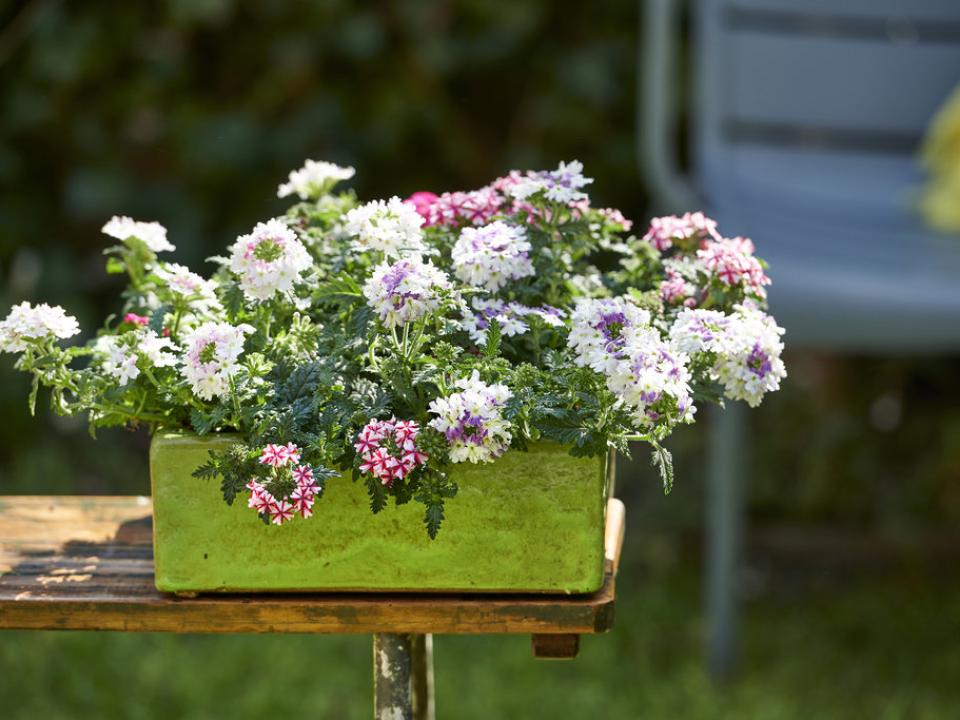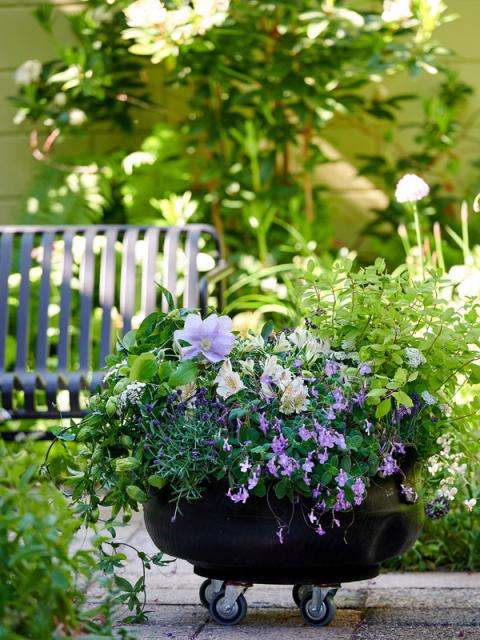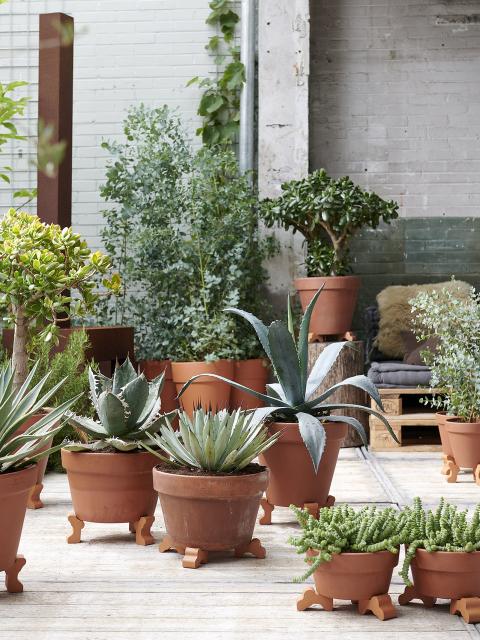Lively colour champion
Verbena is a lively plant that blooms in all directions. This herbaceous flowering garden plant has a host of flowers on the end of each stem in white, lilac, deep purple, bright pink or vivid red. Most flowers have simple colouring, but there are also plants with bicoloured and multicoloured flowers. The more sun they get, the deeper the colour. Because of the irregular open structure, verbena is perfect for hanging baskets, tubs and containers. In beds it is particularly the upright variety that weaves its way beautifully amongst neighbouring plants in the border.
Delicate appearance, strong plant
Verbena is native to Europe and North and South America, and is a member of the Verbena family (Verbenaceae). The plant was first described in 1753, and has been cultivated since 1832. Traces of the plant are found throughout Europe beside the remains of very early settlements, usually alongside rivers and in damp forests.
In old folk tales verbena is consistently described as a plant that protects and heals (although the cultivated variety is only suitable for beautifying your garden). Despite the fact that the plant’s stems appear thin and delicate, it’s a strong plant that flowers for a very long time. Verbena is available from April until June, and attracts insects and butterflies that help to make your garden even more beautiful.
Trivia
- The name Verbena is derived from the Latin for ‘holy branch’ or ‘holy herb’.
- The plant has been appreciated for its healing powers since the Middle Ages. It was believed to help heal ‘the wounds of iron weapons’, hence the nickname ironweed.
-
Roman priests wore a verbena wreath to protect them from evil, whilst magicians used it to make soldiers’ armour ‘impenetrable’.










